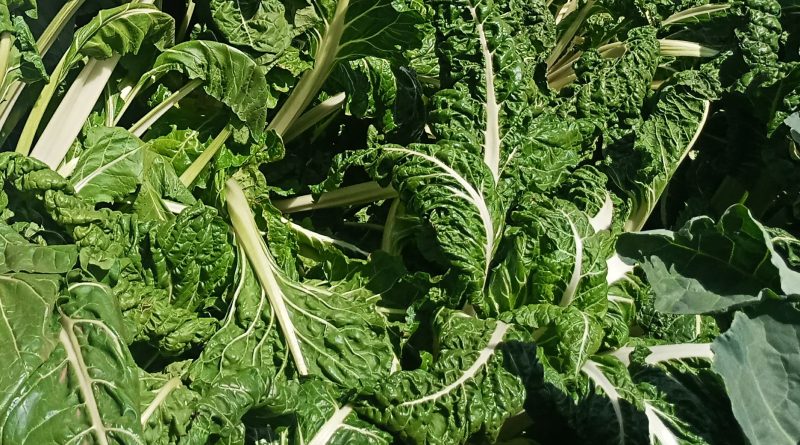The most lucrative crops to grow in Kenya

There are many crops a potential or existing farmer can choose to grow.
Various crops grow in different ecological conditions and take distinct durations to grow from seedling to maturity ready for harvesting.
Various crop products also fetch different prices in the market.
A farmer should consider farming a crop that takes a short time to mature and that will fetch good prices in the market and bringing in huge after sale profits.
Newszaleo.co.ke has sort out to compile a list of the most profitable crops a farmer can grow in Kenya.
1.Vegetables and indigenous vegetables. The most common vegetables a farmer can reap big from include sukuma wiki or kales, spinach, Coriander or Dhania and the indigenous vegetables such as black nightshade also known as managu or sucha, amaranths (terere) , spider plant (saga/saget), kansera, cowpeas leaves (Kunde) and the pumpkin leaves.
More vegetables a farmer can grow include cabbages, capsicum, chilli peppers, cucumbers, tomatoes, onions, carrots, pumpkins, mushrooms, egg plants(mbiriganya) most of which are consumed daily when cooking thus have a ready market.
Modern vegetables such as broccoli, lettuce, celery ,garlic and cauliflower are also taking root and have a growing niche market demand. The market for vegetables include the common local market, supermarkets, hotels, schools and so much more.
The advantage of farming local vegetables is that you save on having to buy them from the market and your family gets to eat fresh supplies from your own farm as you sell the excess supplies.

2. Fruits
Fruits too fetch good prices in the market.
Although different fruits take distinct durations to grow to maturity.
If a farmer secures a ready market they will be smiling all the way to the bank with a ready produce sale.
Currently fruits doing well in the export market include avocados, passion fruits and apple mangoes. There are two varieties of avocados namely Fuerte and Hass.
Hass is the most popular and ideal for export. The purple passion variety are the one mostly exported from Kenya. Other fruits that fetch good prices in the local market include watermelons, pineapples, apples, oranges, bananas, tree tomatoes,plums and so much more. A farmer can diversify growing fruits by starting a nursery with various seedlings which fetch good prices when sold. An orchard is beneficial as the farmer’s family stays healthy by getting vitamins from eating adequate fruits before the surplus are sold to the market.
3. Root tubers These include crops that grow below the soil surface as roots such as potatoes,sweet potatoes, arrow roots and cassava. When harvested in the right season they fetch good prices in urban areas and when no middle men are involved. A farmer can also do value addition to make crisps, grinding to flour that is used in baking and making porridge.
4. Cash crops. There are so many cash crops a farmer can choose from to grow depending on their ecological conditions. The most common include coffee, tea, sugarcane and rice. Long term farmers may consider coffee and tea although they are usually faced with woes such as poor prices in the international market and delayed bonuses. The rice market is also faced with an influx of poor quality imported rice which is usually cheaper thus leading to sale of local produce at poor prices.
5. Grains suck as rice, barley, wheat, millet, oats and corn. Farming grains is usually beneficial when done in large scale which requires a large starting initial capital. A farmer also needs to secure a ready market for their large produce. Luckily huge maize harvests can be sold to the government through the National Cereals and Produce Board.
6. Fodder and forage
With the large number of people keeping livestock across the country such as dairy cows, goats,sheep and bulls there is a huge market for hay and silage.
A farmer can decide to grow Lucerne, Guatemala, fodder maize, fodder sorghum, Boma Rhodes, oats, Sudan grass, desmodium and sweet potato vines for sale as livestock fodder, hay and silage.
7. Macadamia , Groundnuts or peanuts farming. Farmers growing macadamia, groundnut and peanuts have been know to reap big whenever they secure a ready market for their produce. Macadamia are processed and packaged ready for export or sale into the local market. Groundnuts or peanuts are sold in the local market as “njugu” or value added into peanut butter which fetches better market prices.
8. Bamboo farming. A farmer can easily make millions from bamboo farming by either selling propagated seedlings or growing bamboo stems and poles for sale or value adding them to make furniture, floor tiles, build houses, make pillars, baskets, toothpicks, TV stands, beds, vases, boats, wine holders and so much more.
9. Sunflower farming . Sunflower grows fast within 3 to 4 months and have high yields. Sunflower can be value added into making sunflower oil which is edible and fetches good market prices, animal feeds, cosmetics and soap.
These are just but a few crops a farmer can decide to grow or an existing farmer switch to depending on their ecological conditions, time span they are willing to wait for a plant to grow to maturity and the market for their produce.
Which kind of crop do you intend on growing or switching to as your new agribusiness?
